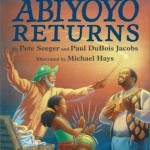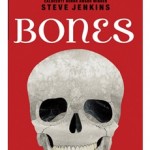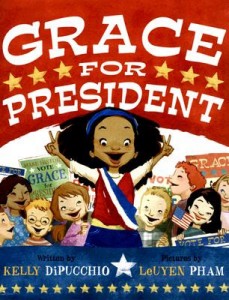 It’s almost Halloween, and you want a book to share with your students that will give them shivers, but not nightmares. Pull out these picture books about a scary giant and the clever little boy who defeats him, and you’ll be hitting the Common Core State Standard of Integrating Knowledge and Ideas while you thrill your listeners.
It’s almost Halloween, and you want a book to share with your students that will give them shivers, but not nightmares. Pull out these picture books about a scary giant and the clever little boy who defeats him, and you’ll be hitting the Common Core State Standard of Integrating Knowledge and Ideas while you thrill your listeners.
Inspired by a South African folktale, Abiyoyo is a storysong written by the folk music master Pete Seeger and illustrated by Michael Hays. A little boy is always in trouble for making noise with his music. His father is shunned by the neighbors for playing too many pranks, making things disappear with his magic wand. But when fearful Abiyoyo comes, the little boy sings until the giant falls down from dancing, and the father uses his magic wand to make Abiyoyo disappear.
 Compare this classic to its sequel, Abiyoyo Returns written by Pete Seeger and Paul DuBois Jacobs, and illustrated by Michael Hays. The little boy who made Abiyoyo disappear is now a grown man, and his town needs a giant’s help. With the help of the magic wand, Abiyoyo returns and the townspeople teach him to help rather than to harm.
Compare this classic to its sequel, Abiyoyo Returns written by Pete Seeger and Paul DuBois Jacobs, and illustrated by Michael Hays. The little boy who made Abiyoyo disappear is now a grown man, and his town needs a giant’s help. With the help of the magic wand, Abiyoyo returns and the townspeople teach him to help rather than to harm.
There’s a terrific “Reading Rainbow” video of Pete Seeger telling/singing the first book (available for free on Youtube) and an audio cd available as well. Share the audio recording of Abiyoyo along with the book so your students can listen to a master storyteller. (You’ll enjoy listening to him as much as your students do, and it’s amazing how listening to a different voice than the one they hear all the time can perk up ears during a read-aloud.) Before reading Abiyoyo Returns, predict with your students how the people will handle Abiyoyo when he comes back. Contrast how Abiyoyo is the problem in one story and the solution in the other.For a fun art extension, get dowels from the hardware store (you can find them for less than $1 – cut them in half and they’re even less expensive!) and decorate your own magic wands. If your students are plagued with Halloween wiggles, let them sing the Abiyoyo song and dance around until they fall down. When you wave your wand to magically transport students back to their seats, their Halloween wiggles will have vanished!

